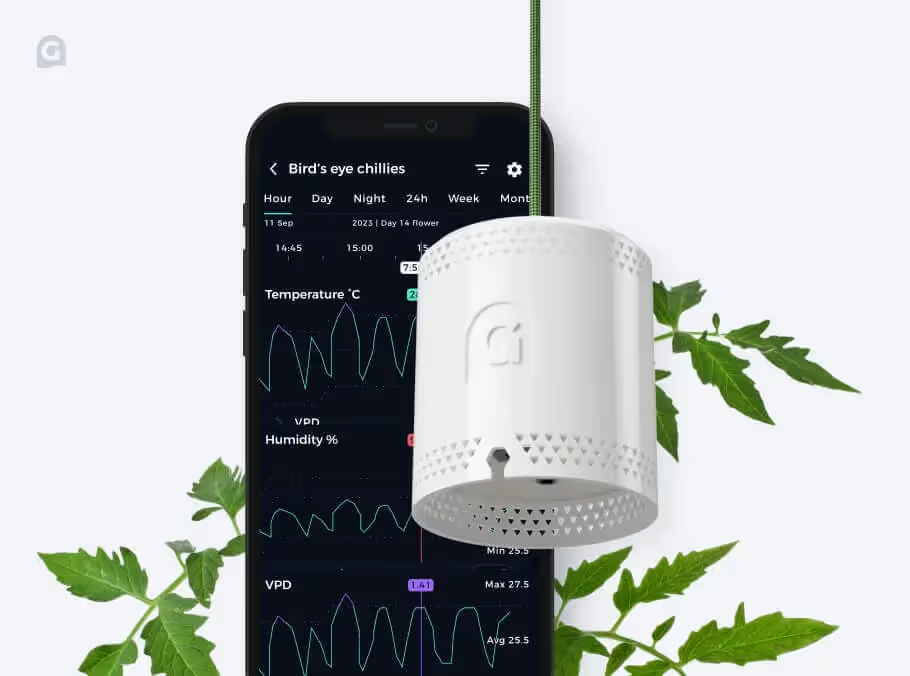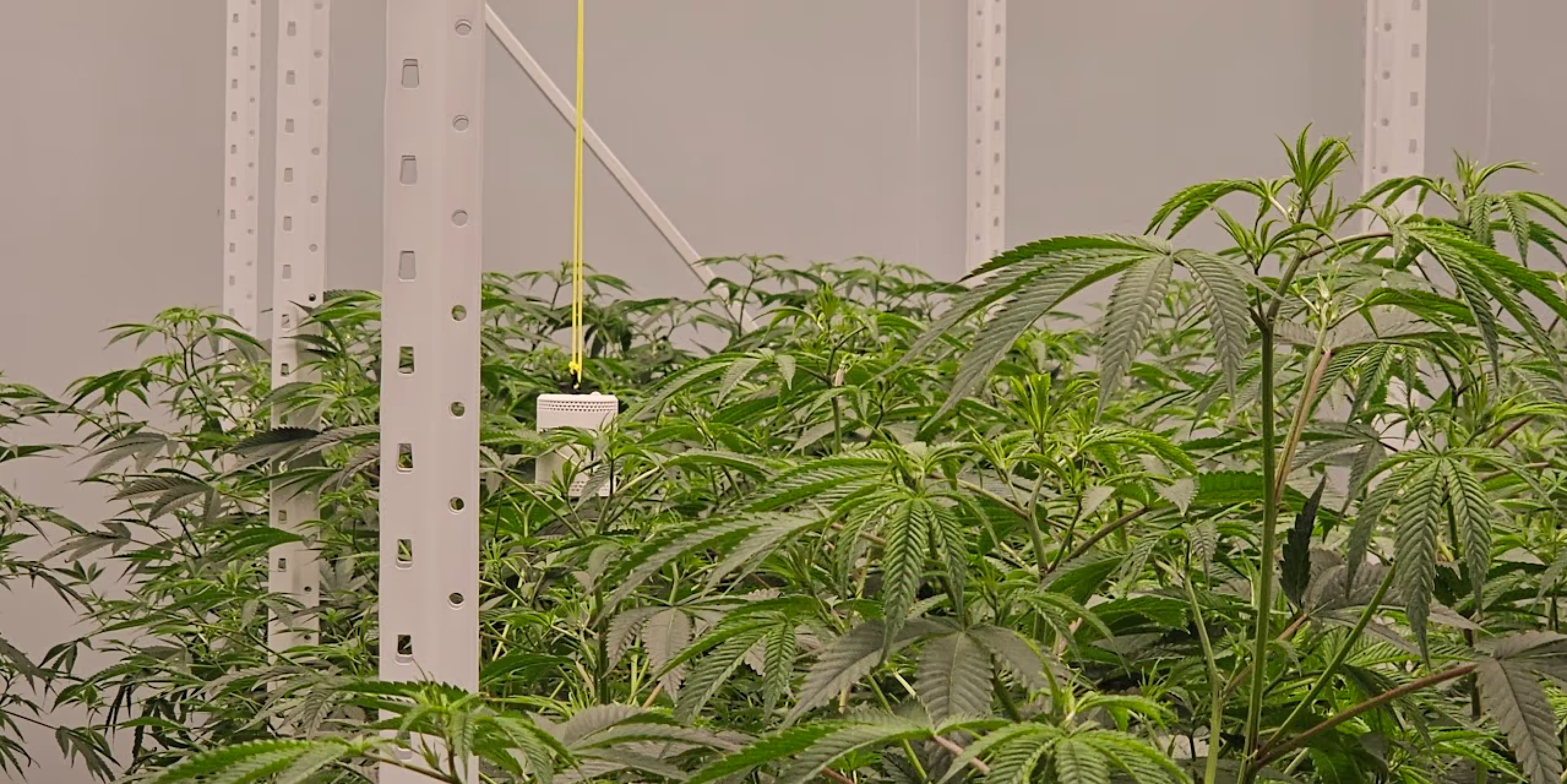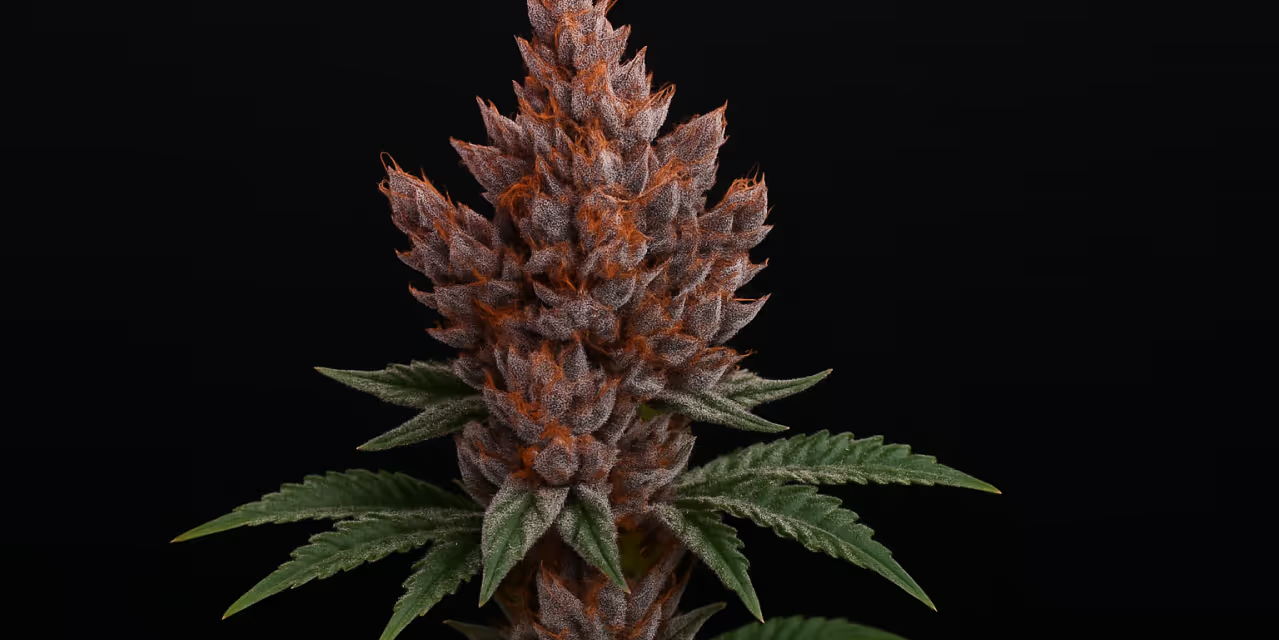Mastering dew point: A game-changer for cannabis growers

.avif)
When cultivating high-quality, healthy plants there are several things that you want to avoid in your grow room.
One of these is condensation. To prevent condensation in your grow space, you first need to get to grips with Dew Point.
It’s time to learn more about why dew point is so important. We’ll cover how to calculate dew point. We’ll also share how to dehumidify your grow space to prevent condensation and keep your plants happy.
Disclaimer: Any information given on this site is for educational purposes only. Please ensure if you’re growing cannabis you’re doing so in accordance with the law and subject to appropriate permissions and licences of the applicable country.
What is dew point?
The air that surrounds us contains many natural gases, including water vapour. Simply put, water vapour is water in gas form, or invisible water if you’d prefer to call it that!
Air has a maximum capacity for the amount of water vapour it can hold. Once the amount of water vapour in the air surpasses that threshold, the water vapour begins to condense. It’s at this point that we can visually see the water droplets on surfaces, this is referred to as condensation. The moment when the water vapour in the air hits the capacity threshold is commonly referred to as Dew Point.
Why is managing dew point so important?
A grow room with too much water in it becomes the ideal home for some common pests and diseases. For example, Botrytis (aka. Bud rot or grey mould). We don’t like the sound of that, do we!?
All plants transpire (release water) to cool down, therefore they are naturally cold and moist.
Cannabis plants have a particularly high moisture content compared to other plants. This is largely thanks to their dense moisture-laden buds.
Cannabis buds are covered in small leaves that are often referred to as ‘sugar leaves’. This leaf covering only adds to the humidity of the air surrounding your plants. This heightens the possibility of moisture-loving funguses such as botrytis from setting up camp in your growing environment.
It’s worth noting the importance of defoliation here. Any excess leaf matter is going to add moisture to your growing environment. By regularly removing any unnecessary plant matter you will remove some of the unwanted moisture in your grow space.
This natural characteristic of your plants makes dew point control even more important in your grow space. Always remember to consider the many intertwining factors and influences. This ensures that you are not fixing one issue whilst creating another!

Relative humidity
So now we have dew point explained, let’s begin to look at how to measure it. Water Vapour is measurable through Relative Humidity (RH). To work out RH we need to measure the highest percentage of water that air can hold before it condenses. You can either do some fancy equations using relative humidity formulas. However, you can also save yourself time and use a relative humidity calculator instead.
There are two key factors that influence RH. First is the amount of water that the air can hold, and second is the air temperature.
The dew point is dependent on the relative air temperature and humidity within your grow space. Whatever your grow set-up is, it’s very likely that the temperature fluctuates for a number of reasons.
By keeping the air temperature in your grow space in an optimum range, you are able to reduce the relative humidity. You can do this by removing some of the water vapour from the air. This restores the balance of water vapour in the air and stops condensation from occurring. But, keeping constant temperatures sounds easier than it is….
Daytime to nighttime temperatures
Finding the temperature sweet spot is no simple challenge! There are several things that need to be considered such as the natural difference in daytime and nighttime temperatures.
As temperatures fluctuate, so does the amount of water the air can hold. More water is held in hot air compared to cold air. This means that as the temperature rises, so does the relative humidity which in turn prevents condensation.
Maintaining suitable temperatures in your grow space through the day is one thing, but nighttime temperature regulation is even more crucial.
Conditions naturally cool overnight. The lights and equipment that add a bit of extra heat to your space are also likely to be off. This means that your grow space temperature can drop quite significantly. As cold air has less capacity for holding moisture, the opportunity for condensation to occur is much larger.
By understanding the dew point of your grow space, you can better decide what nighttime temperature you need to maintain. If you can achieve this temperature regulation then you give your plants the best protection from condensation and its associated issues.
Calculating dew point
So now that we understand what Dew point is, and its importance, we need to work out how to calculate it. Rather than overloading ourselves with fancy maths equations, it’s far easier to use a Dew Point calculator.
To use our Dew Point calculator, you’ll first need a temperature and a relative humidity reading. Simply pop these figures into the calculator and the hard work is done for you.
This way, you gain accurate and precise data. You can then make informed decisions about how to adapt and manage your grow space accordingly.
Due Point Calculator
Temperature (°C):Humidity (%):Calculate
Dew point and humidity through the stages
As plants progress through each life stage, their environmental needs differ. The leaf and root systems of young seedlings are fragile and require extra special care and attention. In this stage, you’d aim for a low Vapour Pressure Deficit (VPD). Or in other words, high humidity and a temperature that’s close to the dew point.
The requirement for RH decreases as plants mature and they become more robust. As buds develop, reducing RH prevents moisture-laden buds from experiencing fungal infections that thrive in humid conditions. Decreasing RH in flowering and late flowering stages is advised for this reason.
As a guide, these are the Relative Humidity ranges to aim for during each stage:
• Clones: high humidity – 60 to 80% RH
• Veg: decrease the humidity – 50 to 60% RH
• Flowering: dial back the humidity a bit – 40 to 55%
• Late flower: dial it back even more – 40 to 50%

Grow sensor
Dew point is just one of the many reasons that accurate environmental monitoring is crucial to successfully growing high-quality plants. However, with so many factors to consider, environmental monitoring can become a full-time job in itself.
This is where you could do with a handy and reliable sidekick right!?
Meet Grow Sensor!
With our innovative and reliable hardware, you can optimise the quality, quantity, and consistency of your crops. Say goodbye to waste and pest problems while saving costs and ensuring a great return on investment for maximum profitability.
Our precision wireless sensor equipment is specifically designed to identify and manage microclimates with unbeatable accuracy. But that’s not all! Our user-friendly software lets you monitor your growing environments from anywhere.
With an intuitive Apple, Android, and desktop app, you’ll have all the metrics that truly matter right at your fingertips. Get actionable insights delivered directly to your device for ultimate control over your crops.
So, whether you’re growing in a greenhouse, tunnels, or indoors, we’ve got you covered. Let us help you create the perfect growing environment for your plants to thrive and flourish!
Takeaways
Hopefully, you now feel empowered and equipped to keep your grow space a condensation-free zone.
Concepts such as Dew point can feel daunting, but, once you get your head around it you can see that it’s a vital thing to keep on top of. I
f you can get it under control then you are one step further to growing really strong plants.
Key points:
- Condensation is the leading cause of moisture-loving funguses such as Botrytis
- To avoid condensation, you need to understand the relative humidity and Dew Point of your growing space
- You want to aim to keep the relative humidity in an optimum range to protect your plants from condensation
- Environmental monitoring is complex and time-consuming. Save yourself the headache by investing in a Grow Sensor.








.avif)








